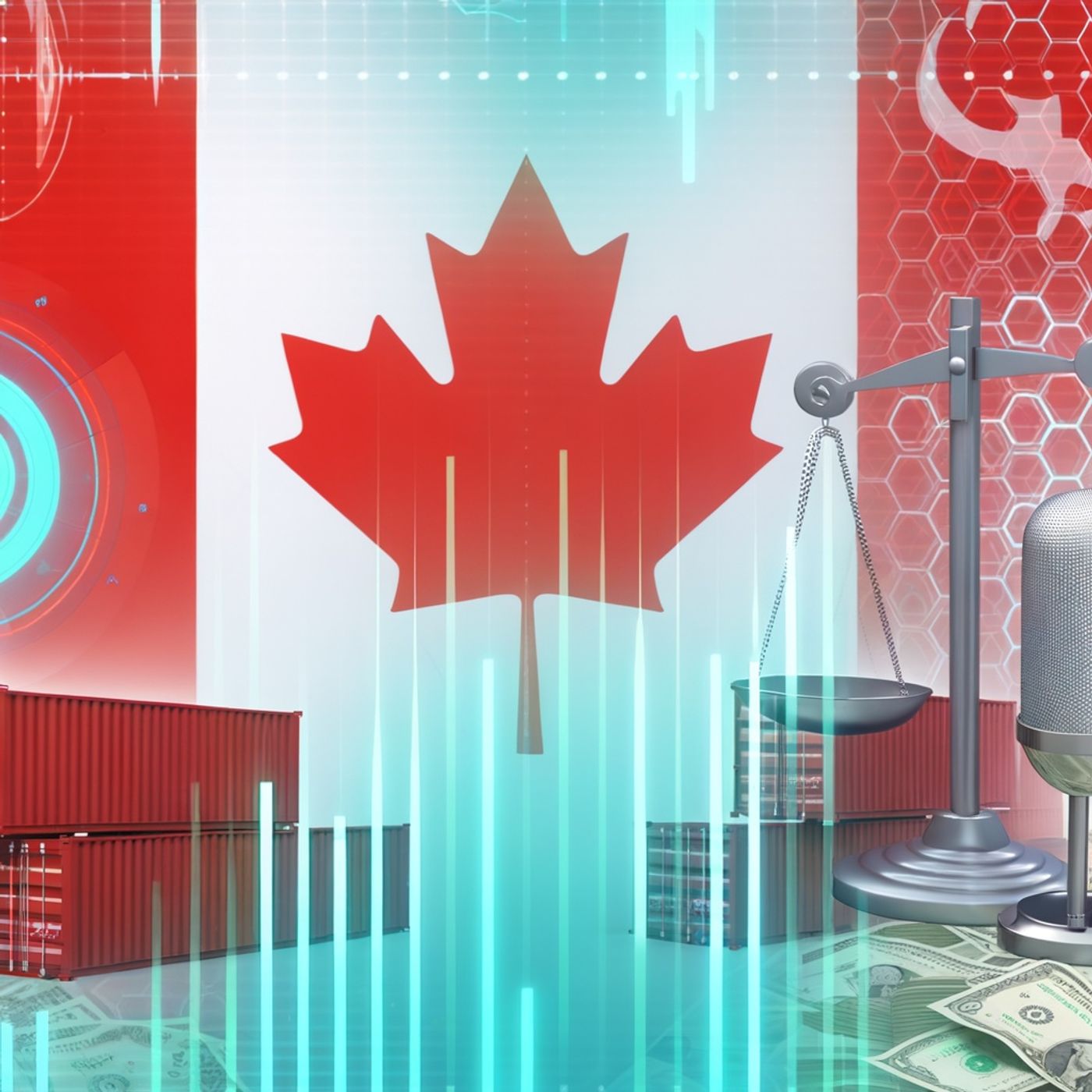US-Canada Trade Tensions Escalate: New Tariffs Target Key Sectors and Reshape Cross-Border Economic Landscape
Update: 2025-09-10
Description
Listeners, today we’re tracking key developments in U.S.-Canada tariffs under the renewed Trump administration, focusing sharply on new tariff rates, government actions, and their direct impact on Canadian trade.
President Trump announced earlier this summer his intention to increase the baseline reciprocal tariff rate to between 15 and 20 percent, which immediately placed Canada, one of America's largest trading partners, in the spotlight. These so-called reciprocal tariffs—meant to match or exceed the tariff rates imposed by U.S. trading partners—officially went into effect August 1 at 15 percent or higher for many countries, heavily penalizing nations like Canada that have a high degree of trade integration with the U.S., according to the Peterson Institute for International Economics.
New U.S. tariffs now target Canadian-origin goods not compliant with USMCA rules of origin at a steep 25 percent rate, while certain energy products and potash from Canada face a slightly lower 10 percent tariff, as published by Sullivan & Cromwell’s September tariff tracker update. If Canadian exporters can prove USMCA compliance, their goods remain largely tariff-free, but for many products, especially in sectors like steel, aluminum, automobiles, and lumber, the revised or ongoing tariffs remain locked in.
Trade Compliance Resource Hub reports that ongoing legal battles and executive orders further complicate the landscape. Earlier this year, President Trump signed an executive order to stop the stacking of multiple tariffs, meaning goods from Canada that are subject to automotive tariffs can’t also be hit with steel or aluminum duties. While this adjustment should bring some relief, the 25 percent tariff on certain goods remains a major barrier for Canadian companies reliant on U.S. buyers.
Canada has begun to recalibrate its own response. The Business Council of Canada highlights that Prime Minister Mark Carney’s government recently removed some retaliatory tariffs on U.S. imports in a controversial move, citing high costs and minimal benefits. However, not all retaliation is off the table—Canada maintains defensive duties in key areas where U.S. tariffs still hit hardest.
The economic effects are sharp. Global Affairs Canada notes a 5 percent rise in exports to the U.S. in July, but Canadian exports year-to-date are still down 2.9 percent compared to last year. Higher tariffs have pushed up prices for Canadian consumers, especially on food and other essentials, while also squeezing businesses caught in cross-border supply chains.
With about 75 percent of Canada’s exports going to the U.S., stability and ongoing negotiation are essential. Experts agree that while tariff retaliation may offer short-term satisfaction, it is no substitute for meaningful dialogue and robust trade frameworks.
Thanks for tuning in to Canada Tariff News and Tracker. Be sure to subscribe, and stay updated on all the latest trade headlines. This has been a quiet please production, for more check out quiet please dot ai.
For more check out https://www.quietperiodplease.com/
Avoid ths tariff fee's and check out these deals https://amzn.to/4iaM94Q
This content was created in partnership and with the help of Artificial Intelligence AI
President Trump announced earlier this summer his intention to increase the baseline reciprocal tariff rate to between 15 and 20 percent, which immediately placed Canada, one of America's largest trading partners, in the spotlight. These so-called reciprocal tariffs—meant to match or exceed the tariff rates imposed by U.S. trading partners—officially went into effect August 1 at 15 percent or higher for many countries, heavily penalizing nations like Canada that have a high degree of trade integration with the U.S., according to the Peterson Institute for International Economics.
New U.S. tariffs now target Canadian-origin goods not compliant with USMCA rules of origin at a steep 25 percent rate, while certain energy products and potash from Canada face a slightly lower 10 percent tariff, as published by Sullivan & Cromwell’s September tariff tracker update. If Canadian exporters can prove USMCA compliance, their goods remain largely tariff-free, but for many products, especially in sectors like steel, aluminum, automobiles, and lumber, the revised or ongoing tariffs remain locked in.
Trade Compliance Resource Hub reports that ongoing legal battles and executive orders further complicate the landscape. Earlier this year, President Trump signed an executive order to stop the stacking of multiple tariffs, meaning goods from Canada that are subject to automotive tariffs can’t also be hit with steel or aluminum duties. While this adjustment should bring some relief, the 25 percent tariff on certain goods remains a major barrier for Canadian companies reliant on U.S. buyers.
Canada has begun to recalibrate its own response. The Business Council of Canada highlights that Prime Minister Mark Carney’s government recently removed some retaliatory tariffs on U.S. imports in a controversial move, citing high costs and minimal benefits. However, not all retaliation is off the table—Canada maintains defensive duties in key areas where U.S. tariffs still hit hardest.
The economic effects are sharp. Global Affairs Canada notes a 5 percent rise in exports to the U.S. in July, but Canadian exports year-to-date are still down 2.9 percent compared to last year. Higher tariffs have pushed up prices for Canadian consumers, especially on food and other essentials, while also squeezing businesses caught in cross-border supply chains.
With about 75 percent of Canada’s exports going to the U.S., stability and ongoing negotiation are essential. Experts agree that while tariff retaliation may offer short-term satisfaction, it is no substitute for meaningful dialogue and robust trade frameworks.
Thanks for tuning in to Canada Tariff News and Tracker. Be sure to subscribe, and stay updated on all the latest trade headlines. This has been a quiet please production, for more check out quiet please dot ai.
For more check out https://www.quietperiodplease.com/
Avoid ths tariff fee's and check out these deals https://amzn.to/4iaM94Q
This content was created in partnership and with the help of Artificial Intelligence AI
Comments
In Channel





